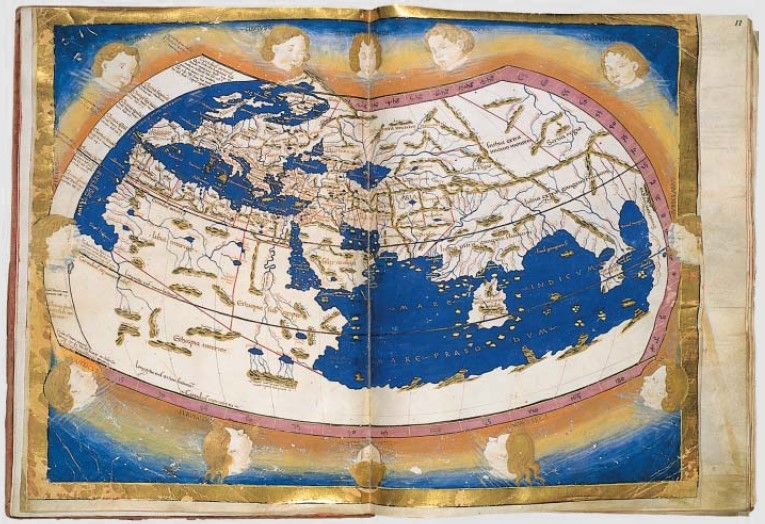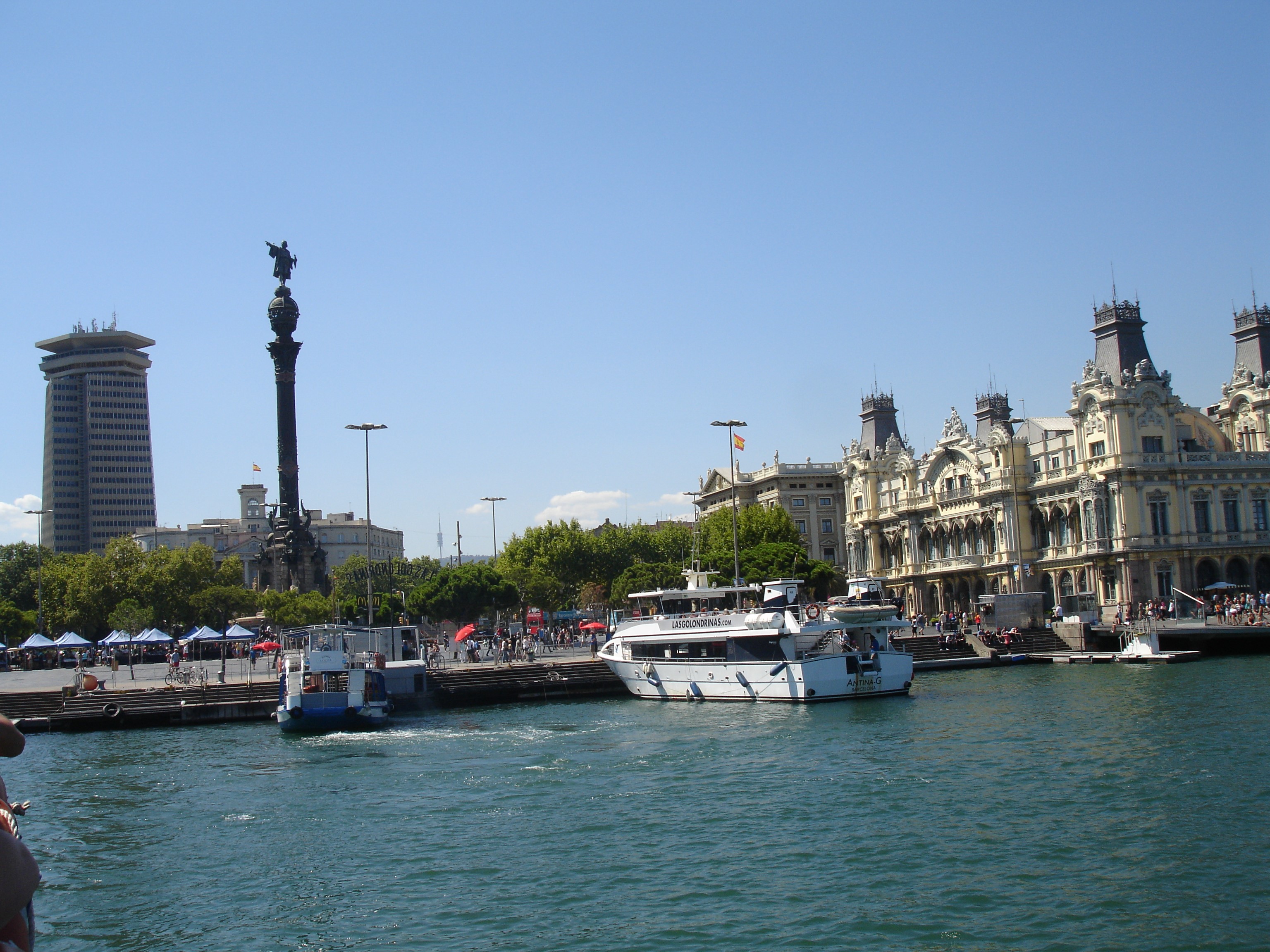From the 30 – to the 40 Primary Political-Economic Regions of the World and Global Europe Concepts & Conceptions
07.06.2017 Yuriy O. CHERNETSKIY (Kharkiv and Zhytomyr),
Yuriy O. CHERNETSKIY (Kharkiv and Zhytomyr),
Doctor of Sciences in Sociology, Ph.D. in Economics & Management, Master of Arts in Political Economy, author of 12 books and more than 400 articles – specially for the NEWSSKY.COM.UA Journal
Dear Readers! As you may remember, my research in the field of international political economy continues, develops and extends substantially the Economist Intelligence Unit (EIU) work.
In one of my 2016 articles devoted to the international political economy, comparative government and economics matters I have proposed the set of global rankings for 160 countries of the world with the 2014 and 2015 population of 0.7 million or more. Powerful correlation between the GDP (PPP) per capita and the Democracy Index has shown that very strong connection exists between democracy and economy development. The second article of my series has been devoted to the new conception and methods of societal governance provision and evaluation. In this context two new international political economy indicators have been introduced (please see below) and global rankings by them for 160 countries of the world are presented. Finally, in the third article these indicators have been used for the 30 “primary political-economic regions” and 8 “secondary (enlarged) regions of the world” achievements evaluation.
The so called Democracy Index (DI) calculated by specialists of the EIU is the basic indicator for my research. The methodology of DI calculation is characterized in the publication “Democracy in an age of anxiety” which can be found on the EIU site in PDF format. This index, on a 0 to 10 scale, is based on the ratings for 60 indicators, grouped into five categories: electoral process and pluralism; civil liberties; the functioning of government; political participation; and political culture. Each category has a rating on a 0 to 10 scale, and the overall Index is their simple average.

Map of the “Old World” (the Ptolemy world map in a 15th-century copy).
I believe that it is useful to calculate the analogue of politics Democracy Index measuring social institution of the economy results, namely: the Economic Performance Index (EPI). I have proposed to count up this index – like the Democracy Index – on a 0 to 10 scale as the simple division result, a country’s GNI (PPP) per capita being the numerator. As for the denominator, the country’s GNI (PPP) per capita of 100,000 international dollars current theoretical maximum seems adequate. For example, the 2015 GNI (PPP) per capita of Qatar – 138,480 international dollars – and of Macao SAR, China – 102,480 international dollars – are the outcome of absolutely extraordinary circumstances, so their 2015 Economic Performance Index score is 10 exactly.
Finally, I prove that it is useful to introduce the indicator which provides us with combined reflection of all political and economic activities in a society outcome. I have proposed to name it in such a way: the Index of Political Economy Achievements (IPEA). It reflects the international or comparative political economy viewpoint. The index is calculated, also on a 0 to 10 scale, as the simple average of two indicators characterized earlier: the Democracy Index and the Economic Performance Index.
Because of “global economic lag” (please see the third article mentioned) the 160 countries’ results reflected by the IPEA – combined in its very nature – are lower than those in the realm of “pure” politics. Under this ranking I have picked up four groups of states with the scores of 5.50–10, 4–5.49, 3–3.99 and below 3 correspondingly. As one can see, per cent shares of all the groups are less than in the Democracy Index case (but not the Economic Performance Index one!):
- Societies with the highest level of political economy achievements – 26 (16.3%)
- Societies with high level of political economy achievements – 31 (19.4%)
- Societies with satisfactory level of political economy achievements – 34 (21.3%)
- Societies with low level of political economy achievements – 69 (43.1%)
The distribution between two categories of countries by their IPEA values is such:
- Societies with relatively high level of political economy achievements (the scores of 4–10) – 57 (6%)
- Societies with relatively low level of political economy achievements (the scores below 4) – 103 (4%)

Columbus Monument, Barcelona. Author of the photo – Tetyana Chernetska (UKRAINE).
To finalize the previous part of my analysis, I have proposed such a vision. The Democracy Index and GDP or GNI (PPP) per capita are generalizing – from the mankind/humanity viewpoint – indicators of the society’s development, government’s effectiveness & efficiency and individuals’ social comfort in the political and economic spheres of life correspondingly. Also in several cases (China, the Muslim World and so on) we see somewhat different attitude to both the indicators, mentioned in previous sentence, or at least to one of them because of the basic values’ ideological deviance at the societal level.
Then, I would propose the distribution of 160 countries embraced with my ratings among the eight, to say, enlarged or secondary regions of the world (the regions of Europe and Russia & Post-Soviet Asia have been extracted by me from the World Bank etc. classifications’ region of “Europe & Central Asia” for better representation of their specific features):
- Europe (including Belarus, Cyprus and Georgia) – 36
- North America – 2
- Latin America & the Caribbean – 23
- Sub-Saharan Africa – 43
- North Africa & Middle East (including Iran and Turkey) – 21
- South Asia (including Afghanistan) – 7
- East Asia & Pacific – 20
- Russia & Post-Soviet Asia (including Armenia and Azerbaijan) – 8
Table 1
REGIONAL DISTRIBUTION OF 160 COUNTRIES BY THE 2015 IPEA GROUPS
| COUNTRIES | Group 1 | Group 2 | Group 3 | Group 4 | TOTAL |
| 1. Europe | 15 | 14 | 5 | 2 | 36 |
| 2. North America | 2 | — | — | — | 2 |
| 3. Latin America & the Caribbean | — | 10 | 10 | 3 | 23 |
| 4. Sub-Saharan Africa | — | 3 | 5 | 35 | 43 |
| 5. North Africa & Middle East | 3 | 1 | 6 | 11 | 21 |
| 6. South Asia | — | 1 | 2 | 4 | 7 |
| 7. East Asia & Pacific | 6 | 2 | 6 | 6 | 20 |
| 8. Russia & Post-Soviet Asia | — | — | — | 8 | 8 |
| TOTAL | 26 | 31 | 34 | 69 | 160 |
While analyzing regional distribution of 160 countries by the 2015 IPEA groups reflected in Table 1 (please see above), let us emphasize only quite poor state of the Russia & Post-Soviet Asia countries region: they all belong to the group of societies with low level of political economy achievements.
Even the “secondary” or “enlarged” regions I treat as real communities of societies, with strong enough mutual influence of constituting countries, their governments and Peoples in political, economic and spiritual spheres.

History of the New World “Historia antipodum oder newe Welt”. Matthäus Merian, 1631.
Because each region of the world is formed as common social space integrated to some degree, I count up regional Democracy and Economic Performance Indexes as weighted arithmetic averages. Their numerator is the sum of products of numbers: each country index value is multiplied by its population and the results are added up. Their denominator is the population of this region.
But in the case of “enlarged” regions their inner stratification differences are very (or even too) substantial. For this reason I use the analyses of situation with the primary political-economic regions of the world as the basic mode of my international political economy research. These primary regions are absolutely self-sufficient global actors of crucial importance. At the same time they function as the structural elements of enlarged regions.
Table 2
PRIMARY REGIONS OF THE WORLD 2015 RANKING BY THE IPEA
(The ratings embrace 167 countries with the 2015 population of 0.3 million and more for which the Democracy Index was counted up; after the political-economic regions’ names their countries are listed in alphabetical order, after the population data, Democracy and Economic Performance Indexes values – places of a region in the population, DI and EPI 2015 global ratings are shown in brackets)
|
REGIONS |
2015 Population (thousands) |
2015 Democracy Global Regional Index | 2015 Economic Performance Index | 2015 Index of Political Economy Achievements |
| 1. Scandinavia (Denmark; Finland; Iceland; Norway; Sweden) | 26,484 (34) | 9.39 (01) | 4.96 (02) | 7.18 |
| 2. United States (country-region) | 321,419 (06) | 8.05 (08) | 5.75 (01) | 6.90 |
| 3. Central Europe – western part (Austria; Germany; Switzerland) | 98,311 (17) | 8.67 (04) | 4.96 (02) | 6.82 |
| 4. Canada (country-region) | 35,852 (31) | 9.08 (02) | 4.40 (04) | 6.74 |
| 5. Developed Oceania (Australia; New Zealand) | 28,377 (32) | 9.05 (03) | 4.31 (05) | 6.68 |
| 6. British Isles (Ireland; United Kingdom) | 69,779 (24) | 8.35 (05) | 4.14 (07) | 6.25 |
| 7. Mainland Western Europe (Belgium; France; Luxembourg; Netherlands) | 95,601 (18) | 8.10 (06) | 4.23 (06) | 6.17 |
| 8. Developed East Asia (Japan; Republic of Korea; Taiwan, the Province of China) | 201,065 (11) | 7.96 (09) | 3.89 (09) | 5.93 |
| 9. Southwestern Europe (Italy; Malta; Portugal; Spain) | 118,000 (16) | 8.09 (07) | 3.47 (10) | 5.78 |
| 10. Developed Eastern Mediterranean states (Cyprus – area controlled by the government of Cyprus; Greece; Israel) | 20,052 (35) | 7.59 (10) | 3.05 (11) | 5.32 |
| 11. Baltic states (Estonia; Latvia; Lithuania) | 6,200 (40) | 7.55 (11) | 2.59 (13) | 5.07 |
| 12. Central Europe – eastern part (Czech Republic; Hungary; Poland; Slovakia) | 63,819 (26) | 7.21 (15) | 2.64 (12) | 4.93 |
| 13. The FYRs – EU member states (Croatia; Slovenia) | 6,288 (39) | 7.14 (16) | 2.46 (14) | 4.80 |
| 14. South America – southern part (Argentina; Chile; Paraguay; Uruguay) | 71,436 (23) | 7.22 (14) | 1.94 (17) | 4.58 |
| 15. Southeastern Europe – EU member states (Bulgaria; Romania) | 27,010 (33) | 6.80 (19) | 2.00 (16) | 4.40 |
| 16. Southern Africa (Botswana; Lesotho; Namibia; South Africa; Swaziland) | 63,100 (27) | 7.40 (13) | 1.25 (25) | 4.33 |
| 17. Brazil (country-region) | 207,848 (10) | 6.96 (17) | 1.51 (22) | 4.24 |
| 18. Mexico (country-region) | 127,017 (15) | 6.55 (20) | 1.71 (19) | 4.13 |
| 19. Maritime Southeast Asia (Indonesia; Malaysia; Philippines; Singapore; Timor-Leste) | 395,374 (03) | 6.92 (18) | 1.24 (26) | 4.08 |
| 20. South Asia Subregional Economic Cooperation countries (Bangladesh; Bhutan; India; Nepal; Sri Lanka) | 1,522,302 (01) | 7.45 (12) | 0.58 (35) | 4.02 |
| 21. South America – northern part (Bolivia; Columbia; Ecuador; Guyana; Peru; Suriname; Venezuela) | 138,893 (14) | 6.09 (22) | 1.31 (24) | 3.70 |
| 22. Balkan non–EU countries (Albania; Bosnia and Herzegovina; Macedonia, the FYR; Montenegro; Serbia) | 16,497 (36) | 6.02 (23) | 1.23 (27) | 3.63 |
| 23. Central America (Costa Rica; El Salvador; Guatemala; Honduras; Nicaragua; Panama) | 45,364 (29) | 6.24 (21) | 0.87 (33) | 3.56 |
| 24. Turkey (country-region) | 78,666 (21) | 5.12 (26) | 1.94 (17) | 3.53 |
| 25. Arabian Peninsula (Bahrain; Kuwait; Oman; Qatar; Saudi Arabia; United Arab Emirates; Yemen) | 79,614 (19) | 2.34 (39) | 4.06 (08) | 3.20 |
| 26. Eastern Europe – non-EU countries (Belarus; Georgia, excl. Abkhazia and S. Ossetia; Moldova – Republic of, excl. Transnistria; Ukraine) | 61,944 (28) | 5.43 (25) | 0.92 (32) | 3.18 |
| 27. Developing Oceania (Fiji; Papua New Guinea) | 8,511 (38) | 5.99 (24) | 0.34 (38) | 3.17 |
| 28. West Indies (Cuba; Dominican Republic; Haiti; Jamaica; Trinidad and Tobago) | 36,715 (30) | 4.97 (27) | 1.20 (28) | 3.09 |
| 29. Russian Federation (country-region) | 144,097 (13) | 3.31 (34) | 2.38 (15) | 2.85 |
| 30. Western Africa (Benin; Burkina Faso; Cabo Verde; Côte D’Ivoire; Gambia; Ghana; Guinea; Guinea Bissau; Liberia; Mali; Mauritania; Niger; Nigeria; Senegal; Sierra Leone; Togo) | 353,222 (05) | 4.72 (28) | 0.41 (37) | 2.57 |
| 31. Mainland Southeast Asia (Cambodia; Lao People’s Democratic Republic; Myanmar; Thailand; Viet Nam) | 235,940 (07) | 4.13 (31) | 0.82 (34) | 2.48 |
| 32. Eastern Africa (Burundi; Comoros; Djibouti; Eritrea; Ethiopia; Kenya; Madagascar; Malawi; Mauritius; Mozambique; Rwanda; Tanzania; Uganda; Zambia; Zimbabwe) | 372,682 (04) | 4.59 (29) | 0.20 (40) | 2.40 |
| 33. Developing East Asia (China; Democratic People’s Republic of Korea; Hong Kong (China); Mongolia) | 1,346,640 (02) | 3.27 (35) | 1.50 (23) | 2.39 |
| 34. South Asia – western part (Afghanistan; Pakistan) | 221,452 (09) | 4.16 (30) | 0.48 (36) | 2.32 |
| 35. Developing Levant (Iraq; Jordan; Lebanon; Palestine; Syrian Arab Republic) | 72,793 (22) | 3.48 (33) | 1.13 (29) | 2.31 |
| 36. Eastern Transcaucasia (Armenia; Azerbaijan) | 12,669 (37) | 3.02 (36) | 1.52 (21) | 2.27 |
| 36. Northern Africa (Algeria; Egypt; Libya; Morocco; Sudan; Tunisia) | 223,174 (08) | 3.55 (32) | 0.98 (31) | 2.27 |
| 38. Iran (country-region) | 79,109 (20) | 2.16 (40) | 1.70 (20) | 1.93 |
| 39. Post-Soviet Central Asia (Kazakhstan; Kyrgyzstan; Tajikistan; Turkmenistan; Uzbekistan) | 68,657 (25) | 2.52 (38) | 1.08 (30) | 1.80 |
| 40. Central Africa (Angola; Cameroon; Central African Republic; Chad; Congo; Democratic Republic of the Congo; Equatorial Guinea; Gabon) | 151,760 (12) | 2.90 (37) | 0.27 (39) | 1.59 |
Sources of the data for the EPI and IPEA count: publications of the Economist Intelligence Unit (Democracy Index) and World Bank (population & GNI – or GDP – (PPP) per capita).
In the previous article of my series in English I have singled out 30 primary political-economic regions of the world embracing 160 countries. But this division does not provide researchers with statistical results precise enough in many cases of regional groupings of societies, first of all – ones with relatively high level of political economy achievements, and is somewhat “discriminatory” mainly in research attitude to the groups of countries with the highest level of political economy achievements. That is why I begin to use the division onto 40 primary political-economic regions of the world embracing 167 countries (please see Table 2).
Let me remind you: in 2015 the DI has been counted up not only for 160 countries of my basic rankings but also for six democratic “micro-states” with population from 0.3 to 0.6 million – Cabo Verde, Iceland, Luxembourg, Malta, Montenegro, Suriname – and Chinese statehood has been represented by Hong Kong (not only by China and Taiwan). Under new framework these seven societies become substantially important for their primary regions’ aggregate political and economic results, and for this reason they are included directly to my research scheme. Finally, there have been done such changes from the viewpoint of primary global political-economic regions’ list and composition:
- to the region of Scandinavia (now 5 countries) – Iceland has been added;
- the region of “Western Europe” has been divided onto Central Europe – western part (3 countries), British Isles (2 countries) and Mainland Western Europe (4 countries; Luxembourg is added) regions;
- the region of “Oceania” has been divided onto Developed Oceania (2 countries) and Developing Oceania (2 countries) regions;
- the region of “Southern Europe” has been divided onto Southwestern Europe (4 countries; Malta is added) and Developed Eastern Mediterranean states (3 countries; Israel from the former primary region of Levant and secondary region of North Africa & Middle East is added) regions;
- the region of “Eastern Europe – EU member states” has been divided onto Baltic states (3 countries), Central Europe – eastern part (4 countries), The FYRs – EU member states (2 countries) and Southeastern Europe – EU member states (2 countries) regions;
- the region of “South America” has been divided onto South America – southern part (4 countries), Brazil (a country-region) and South America – northern part (7 countries; Suriname is added) regions;
- the former region of “Central America” has been divided onto Mexico (a country-region) and Central America (6 countries) regions;
- to the region of Balcan non-EU countries (now 5 countries) – Montenegro has been added;
- the former region of “Levant”, including Iraq, has been transformed into Developing Levant (5 countries; Israel is excluded – please see above) region;
- to the region of Western Africa (now 16 countries) – Cabo Verde has been added;
- and to the region of Developing East Asia (now 4 countries) – Hong Kong has been added.
The renewed set of primary political-economic regions’ global ratings will be analyzed in details in my next article of this series. And right now I would introduce the concept of Global Europe, or the European World. It embraces 43 sovereign states, in territorial sense wholly belonging to “physical-geographic” Europe, and also 7 countries of other continents, namely: Canada, the United States, Australia, New Zealand, Israel, Cyprus and Georgia. In four mentioned countries of the “New World” societies and statehood have developed in a successively or consistently European way for ages. Three states of physical-geographic Asia obviously orient themselves onto resulting European social values of liberty, democracy and humanism. These values remain of crucial importance for societal discourse in all the countries of physical-geographic Europe and define outstanding progressive role of the European World in global social development.
To be continued.

